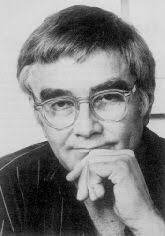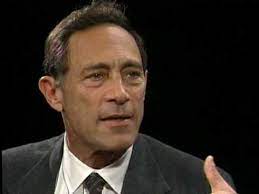by Charles Lear, author of “The Flying Saucer Investigators.”

In 1981, a new narrative became firmly established as part of the UFO mystery with the publication of Budd Hopkins’s book Missing Time. A large part of the book consists of transcriptions of recordings made during hypnosis sessions where the subjects described being taken aboard craft by 3-4 feet tall creatures that performed medical procedures on them. The descriptions of the creatures were similar to descriptions of beings that would become known as “the greys,” which are the now iconic creatures with large black eyes that became commonly reported after Whitley Strieber’s 1987 book Communion. The eyes of the creatures reported in Hopkins’s book vary. The book came out in July of 1981 and Hopkins, along with Dr. Aphrodite Clamar, a psychotherapist hired to conduct some of the hypnosis sessions, gave interviews to the press. From this point on, the UFO Abduction phenomenon began to receive serious consideration from the mainstream press with Hopkins as the leading authority for the rest of the decade.
There is a full-page article headlined “Book Documents Cases of Alien ‘Abductions’” by Hal McKenzie on page 5 of the September 19, 1981, New York, New York, News World. McKenzie sums up the book’s “chilling message” this way: “Extraterrestrial beings have been picking people up from the earth, taking them into their spacecraft, examining them medically, taking samples of their flesh and hair and then releasing them after enducing [sic] amnesia to forget their bizarre and terrifying experience.” Hopkins ended the introduction of his book with this: “All I can say is that I’m sure it is going on; people are being picked up, “examined” –sometimes marked for life–and released, their memories conveniently blocked. Beyond this, everything is speculation.”
 Hopkins is described as “an internationally acclaimed artist” with paintings in “many major U.S. museums,” which was indeed the case, and they are still part of the collections of museums such as the Whitney Museum of American Art in New York City. According to McKenzie, Hopkins started investigating abduction cases in 1976 and became “intensely involved” with 19 of them involving 37 people. According to McKenzie, out of these, the focus in the book is on seven people, who all recalled their experience while under hypnosis. In actuality, the book looks in detail at seven accounts told by six people, with one of them, referred to as Virginia Horton, describing two incidents from her childhood, one in 1950 and the other in 1960.
Hopkins is described as “an internationally acclaimed artist” with paintings in “many major U.S. museums,” which was indeed the case, and they are still part of the collections of museums such as the Whitney Museum of American Art in New York City. According to McKenzie, Hopkins started investigating abduction cases in 1976 and became “intensely involved” with 19 of them involving 37 people. According to McKenzie, out of these, the focus in the book is on seven people, who all recalled their experience while under hypnosis. In actuality, the book looks in detail at seven accounts told by six people, with one of them, referred to as Virginia Horton, describing two incidents from her childhood, one in 1950 and the other in 1960.
In the introduction to Missing Time, Hopkins makes an argument that UFO reports “constitute a problem worth looking into.” He presents this as the definition of “UFO belief.” He then gets into a bit of U.S. UFO history that includes the 1964 Lonnie Zamora incident and the 1896-7 mystery airship wave. He introduces Dr. J. Allen Hynek, a former scientific consultant for the U.S. Air Force’s UFO investigation who was, at that time, the director of the Center for UFO Studies. Hopkins was a member of that organization and also a member of the Mutual UFO Network. He describes Hynek as having become “persuaded of both the reality and the crucial importance of the UFO phenomenon, and the strong possibility that UFOs were, indeed, extraterrestrial spacecraft.”
Hopkins brings up occupant reports and then gets into the Betty and Barney Hill case that involved their recollections, while under hypnosis, of an abduction experience. He then gives an account of his own involvement in abduction report investigations that, for him, began with a UFO witness reporting a period of missing time. He provides a “typical” scenario with the already described elements and emphasizes scars and marks found on the bodies of his subjects.
What may be of interest to UFO historians is that Hopkins mentions that his partner in some of his investigations was Ted Bloecher, a fellow New Yorker who was one of the founding members in 1954 of Civilian Saucer Intelligence. Bloecher was quite active in the UFO community and one of his focuses was on humanoid reports.
Before Hopkins got involved with abduction reports, he became interested in UFO reports after his own sighting near Truro, Massachusetts, in 1964. He describes this sighting and his growing interest leading up to active research in Chapter 1 of Missing Time. In Chapter 2, Hopkins gives details of an investigation he took on in 1975 involving a reported landing in North Hudson Park, near Fort Lee, New Jersey. He wrote an article about it that was published in the March 1, 1976, Village Voice. Chapter 3 is where Hopkins’s accounts of his abduction report investigations begin. The chapter begins with a description of his work with Steven Kilburn whom Hopkins reports was introduced to him by Bloecher. Kilburn described nothing more than having a feeling that something had happened to him on a stretch of road in Maryland. In the course of multiple hypnosis sessions, a disjointed narrative emerged that seemed to describe an abduction experience involving some sort of clamp put on his shoulder. Hopkins compares Kilburn’s narrative with that of others who reportedly had abduction experiences, such as Betty and Barney Hill, Travis Walton, William Hermann, and Judy Kendall. He points out the similarities of the creatures and events and speculates as to meanings and motives. This treatment is repeated for the six other cases described in Chapters 4 through 8 with the accounts of Virginia Horton taking up Chapters 6 and 8.
Chapter 9 is titled “Speculations Both Grim and Hopeful.” Here, Hopkins speculates on the motives of “the UFO occupants” and includes the ideas that humans are being studied, implanted with monitoring devices, and having genetic material taken from them. He closes with his belief in the possibility that there is an invisible epidemic of abduction encounters.
Finally, in Chapter 10, titled “What Can Be Done” Hopkins makes arguments for making “the invisible epidemic” visible and the therapeutic benefits of hypnosis in abduction cases.
In the News World article, Hopkins emphasized that he was a painter and that the book was a means to “bring this material to the largest audience possible.” He said he didn’t intend to do a follow-up and that he really wanted “to hand these cases over to other people.” Instead, Hopkins kept on with his research and published Intruders: The Incredible Visitations at Copley Woods in 1987 and Witnessed: The True Story of the Brooklyn Bridge UFO Abductions, in 1996.

Hopkins’s methods during the Brooklyn Bridge case came under criticism in a 1993 paper titled A Critique of Budd Hopkins’ Case of the UFO Abduction of Linda Napolitano by Joseph J. Stefula, Richard D. Butler, and George P. Hansen. By the time Witness was published, David M. Jacobs, an associate professor of history at Temple University, and John E. Mack M.D., a former head of the Harvard Medical School Department of Psychiatry, had published their own books on abduction encounters. Jacobs published Secret Life: Firsthand Accounts of Alien Abductions in 1992, and Mack published Abduction: Human encounters With Aliens in 1994. Hopkins, Jacobs and Mack were the leading authorities on the subject into the new millennium. Then in 2004, Mack was hit and killed by a drunk driver in England, and in 2011, Jacobs became involved in a scandal with one of his subjects, Emma Woods. What Woods reported regarding Jacobs’s handling of her case prompted Hopkins’s former wife, Carol Rainey, to write an article exposing what she felt were the shortcomings of Hopkins’s and Jacobs’s methods.
Next Week: UFO Abduction Research Under Attack.